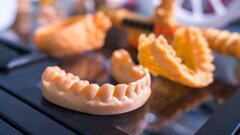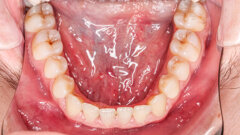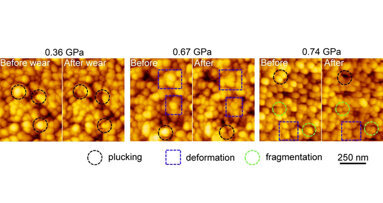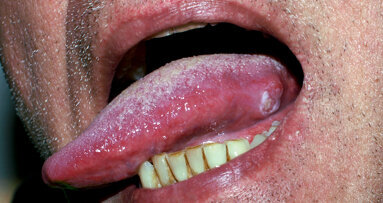STATE COLLEGE, Pa., U.S.: For a long time, people have known that individual differences in taste and smell can have an influence on liking or disliking a particular food. Recently, in a new study, researchers used chocolate to help understand how the tongue reacts to different textures in food, revealing that the tongue has much to do with whether the food is eaten, liked or rejected.
The study, conducted in the Sensory Evaluation Center at the Penn State University College of Agricultural Sciences in the U.S., involved 111 volunteer tasters, who had their tongues checked for physical sensitivity and were then asked to describe their perceptions about various textures of chocolate. To gather the data, the researchers tested whether there was a relationship between oral touch sensitivity and the perception of particle size. They used a device called von Frey hairs to gauge whether the participants could discriminate between different amounts of force applied to their tongues.
According to the researchers, when the participants were split into high- and low-acuity groups based on pressure point sensitivity, there was a significant relationship between chocolate texture discrimination and pressure point sensitivity on the center of the tongue for the high-acuity group. However, a similar relationship was not seen for data from the lateral edge of the tongue.
“These findings are novel, as we are unaware of previous work showing a relationship between oral pressure sensitivity and ability to detect differences in particle size in a food product,” said Dr. John Hayes, Director of the Sensory Evaluation Center. “Collectively, these findings suggest that texture detection mechanisms, which underpin point pressure sensitivity, likely contribute to the detection of particle size in food such as chocolate.”
The study, conducted by a cross-disciplinary team that included both food and speech scientists, also brought about new insight regarding swallowing. Dr. Nicole Etter, assistant professor in the Department of Communication Sciences and Disorders at the Penn State College of Health and Human Development, said: “An important aspect of speech-language pathology is helping people with feeding and swallowing problems. Many clinical populations—ranging from young children with disabilities to older adults with dementia—may reject foods based on their perception of texture. This research starts to help us understand those individual differences.”
With new insights into the tongue, the team now wants to take its research a step further to focus on studies involving foods other than chocolate and enrolling older, perhaps less healthy participants. The aims are to judge the ability of such participants to experience oral sensations and to explore food rejection behavior that may have serious health and nutrition implications.
The study, titled “Oral somatosensatory acuity is related to particle size perception in chocolate,” was published on May 15, 2019, in Scientific Reports.
Tags:
FAYETTEVILLE, Ark., U.S.: Food leaves permanent traces on teeth. Examining these marks—or microwear—a team of researchers has documented the effects of ...
STONY BROOK, N.Y., US: The applicability and efficacy of artificial intelligence (AI) within dentistry appears to be limitless. With each passing day, ...
BERLIN, Germany: For certain animals, the loss of teeth does not always pose a problem: sharks and crocodiles have the ability to regrow their teeth ...
FRANKFURT AM MAIN, Germany: While the mechanism underlying loss of consciousness in anaesthesia is not known, it has been hypothesised that it is due to ...
LEIPZIG, Germany: Over the past month, one topic has dominated the international news cycle above all else—the Wuhan coronavirus outbreak. As of 10 ...
PENNSYLVANIA, U.S.: Child obesity throughout the Western world is becoming more of a common problem. In a new study that may help our comprehension of the ...
CLEVELAND, Ohio, U.S.: New findings by a US research team regarding certain bacteria and fungi may make way for the development of a precautionary test for ...
Kraków, Poland: Seamless and streamlined cooperation between dentists and dental technicians is a recipe for success. In Japanese, “kizuna” describes a...
DUNEDIN, New Zealand: In a new study researchers have found a connection between diets with high intakes of fibre and wholegrain foods and a reduction in ...
Delivery of dental care falls into two categories: single provider care (uni-disciplinary) and collaborative care. The structure of a practice—that is, ...
Live webinar
Mon. 12 January 2026
9:00 am EST (New York)
Prof. Judith Jones D.D.S; M.P.H., Prof. Kakuhiro Fukai D.D.S., Ph.D, Dr. Bathsheba (Bethy) Turton
Live webinar
Wed. 14 January 2026
12:00 pm EST (New York)
Dr. Théo Laplane, Dr. Robert Gottlander DDS
Live webinar
Fri. 16 January 2026
12:00 pm EST (New York)
Live webinar
Mon. 19 January 2026
1:00 pm EST (New York)
Philipp Kopp, Michael Seeber
Live webinar
Thu. 22 January 2026
2:00 pm EST (New York)
Dr. Nicola M. Grande DDS, PhD
Live webinar
Wed. 28 January 2026
8:00 am EST (New York)
Live webinar
Wed. 28 January 2026
11:00 am EST (New York)
Prof. Dr. Jan-Frederik Güth



 Austria / Österreich
Austria / Österreich
 Bosnia and Herzegovina / Босна и Херцеговина
Bosnia and Herzegovina / Босна и Херцеговина
 Bulgaria / България
Bulgaria / България
 Croatia / Hrvatska
Croatia / Hrvatska
 Czech Republic & Slovakia / Česká republika & Slovensko
Czech Republic & Slovakia / Česká republika & Slovensko
 France / France
France / France
 Germany / Deutschland
Germany / Deutschland
 Greece / ΕΛΛΑΔΑ
Greece / ΕΛΛΑΔΑ
 Hungary / Hungary
Hungary / Hungary
 Italy / Italia
Italy / Italia
 Netherlands / Nederland
Netherlands / Nederland
 Nordic / Nordic
Nordic / Nordic
 Poland / Polska
Poland / Polska
 Portugal / Portugal
Portugal / Portugal
 Romania & Moldova / România & Moldova
Romania & Moldova / România & Moldova
 Slovenia / Slovenija
Slovenia / Slovenija
 Serbia & Montenegro / Србија и Црна Гора
Serbia & Montenegro / Србија и Црна Гора
 Spain / España
Spain / España
 Switzerland / Schweiz
Switzerland / Schweiz
 Turkey / Türkiye
Turkey / Türkiye
 UK & Ireland / UK & Ireland
UK & Ireland / UK & Ireland
 Brazil / Brasil
Brazil / Brasil
 Canada / Canada
Canada / Canada
 Latin America / Latinoamérica
Latin America / Latinoamérica
 USA / USA
USA / USA
 China / 中国
China / 中国
 India / भारत गणराज्य
India / भारत गणराज्य
 Pakistan / Pākistān
Pakistan / Pākistān
 Vietnam / Việt Nam
Vietnam / Việt Nam
 ASEAN / ASEAN
ASEAN / ASEAN
 Israel / מְדִינַת יִשְׂרָאֵל
Israel / מְדִינַת יִשְׂרָאֵל
 Algeria, Morocco & Tunisia / الجزائر والمغرب وتونس
Algeria, Morocco & Tunisia / الجزائر والمغرب وتونس
 Middle East / Middle East
Middle East / Middle East
















































To post a reply please login or register